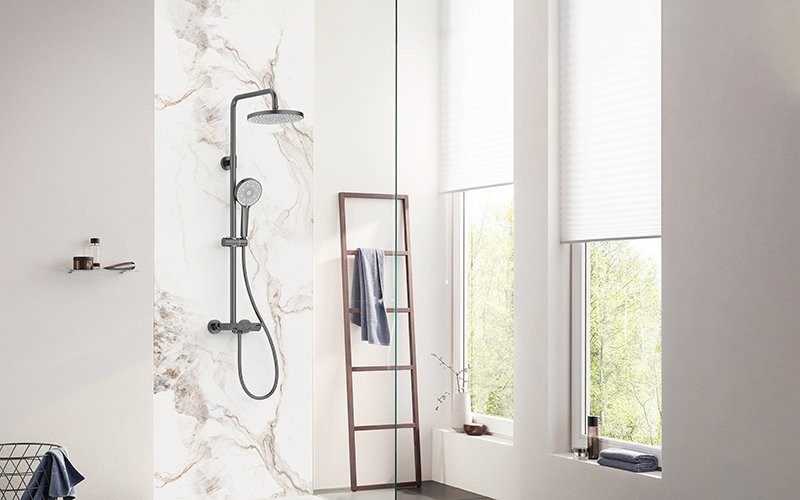Table of Content
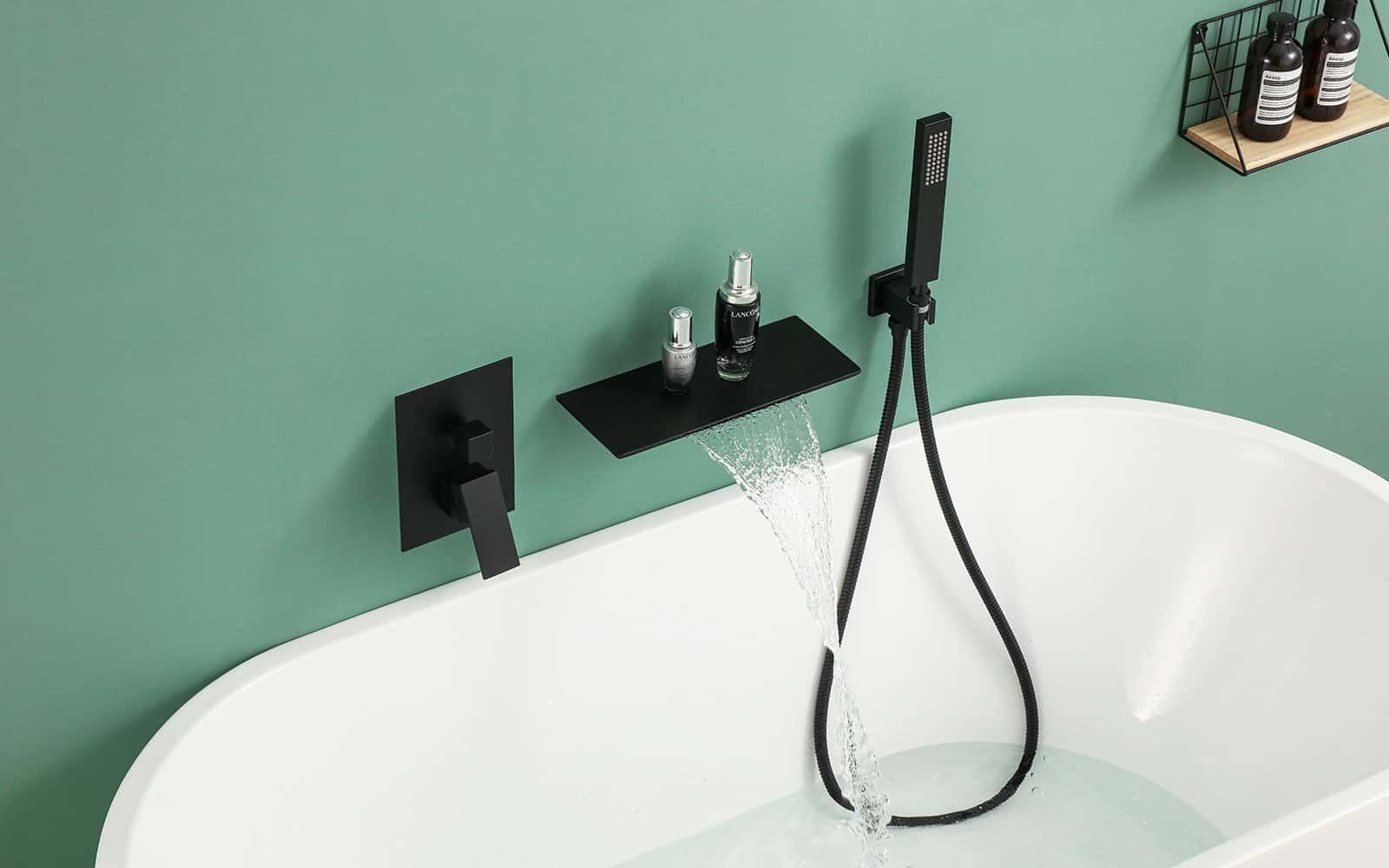
When you’re considering upgrading or renovating your bathroom, a complete shower system with a rough-in valve is an essential part of the process. This post will take you through everything you need to know about rough-in valves—what they are, their features, types, and benefits—so you can make an informed decision when choosing the right system for your needs.
What is a Rough-In Valve?
A rough-in valve is the core component of a complete shower system that is installed during the initial stages of construction, before any visible fixtures like showerheads or faucets are added. The term “rough-in” refers to the process of connecting water supply lines to plumbing systems and securing various fixtures in place, such as bathtubs or showers.
These valves typically remain hidden behind walls or under the floor, and they serve as an essential installation point for your shower fixture. Rough-in valves are responsible for regulating water flow and pressure, ensuring your shower operates effectively and safely once all the final elements (such as tiles, showerheads, and faucets) are installed.
Types of Rough-In Valves
There are primarily two types of rough-in valves, each with different functionalities to suit varying preferences:
Pressure Balance Valve
A pressure balance valve is one of the most common types used in shower systems. Its primary function is to regulate the balance between hot and cold water pressure. If there is a sudden fluctuation in either, such as when someone uses water in another part of the house, the valve automatically adjusts to maintain the preset temperature and reduce the risk of sudden temperature spikes or freezing.
- Benefits: The key advantage of a pressure balance valve is safety. It helps to minimize sudden temperature fluctuations caused by sudden hot or cold bursts of water.
- Ideal for: Families or individuals who prioritize safety and need a simple, reliable solution.
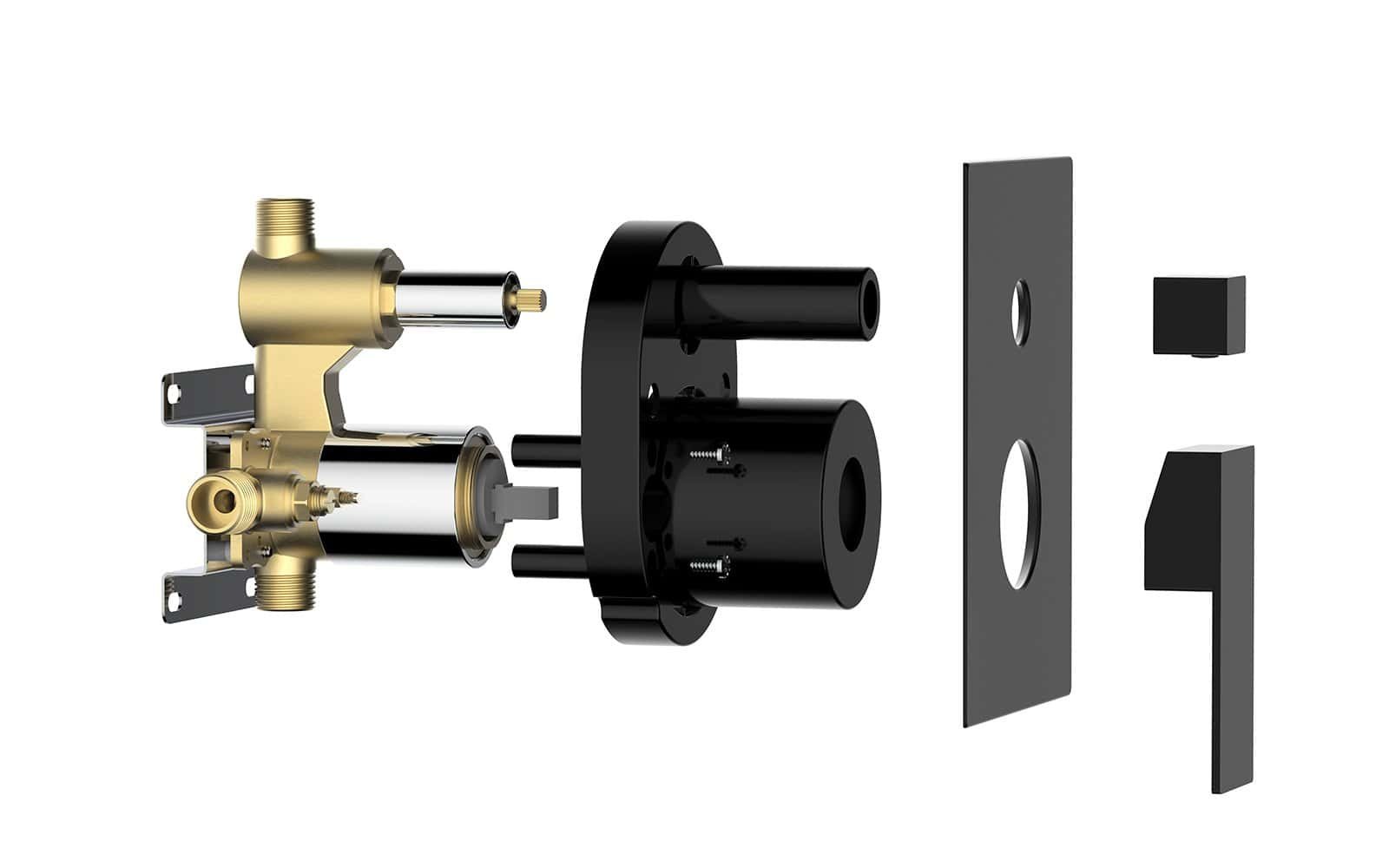
Thermostatic Valve
A thermostatic valve offers even more precise control over the water temperature by maintaining it at a constant level, regardless of fluctuations in water pressure. This valve type comes with a temperature dial that lets you set your ideal shower temperature, and the valve will adjust the water flow to maintain that temperature precisely.
- Benefits: The thermostatic valve is perfect for users who want more control over their shower experience.
- Ideal for: People who want the most comfortable and luxurious shower experience, as well as those in households with varying water pressure.
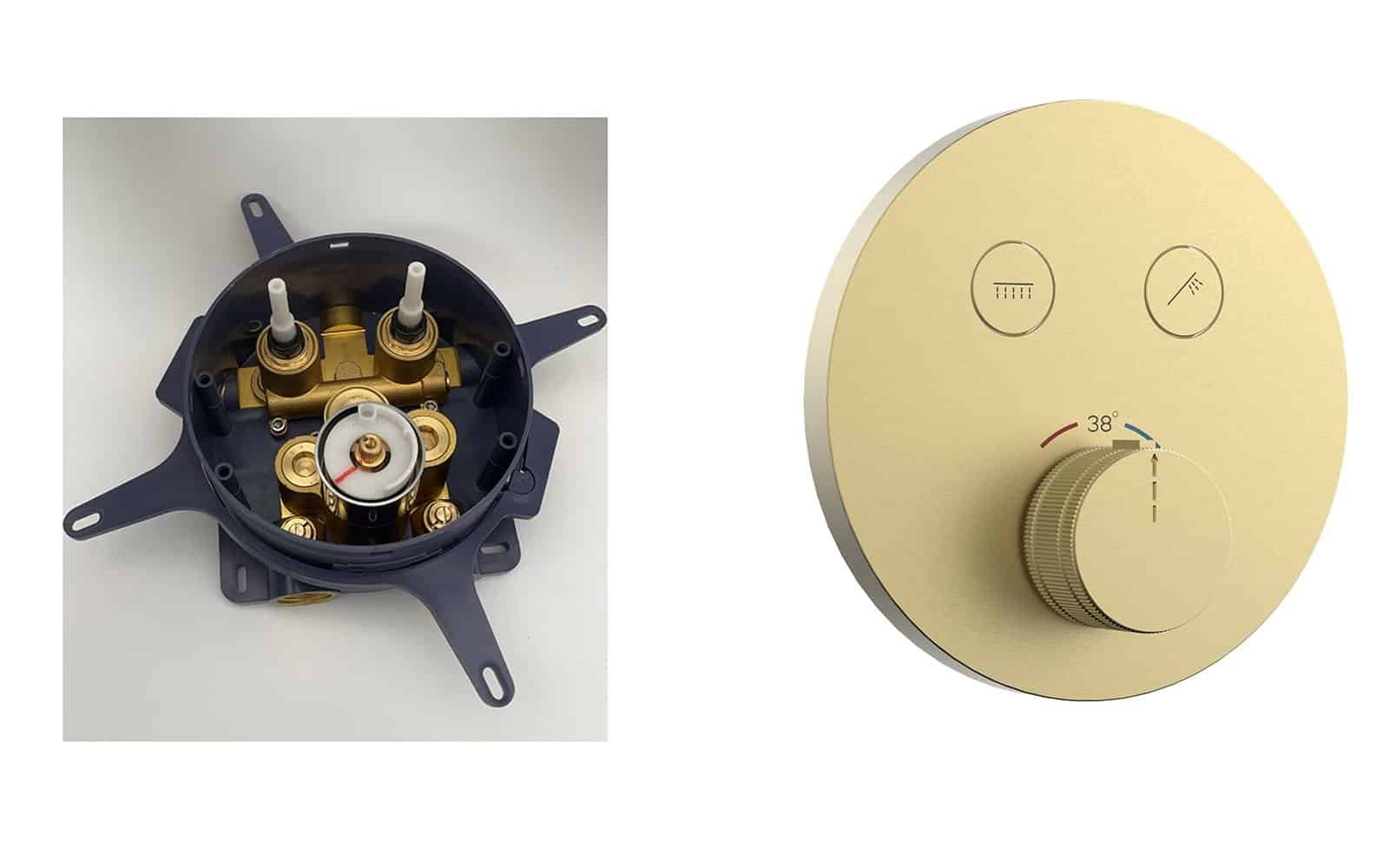
Benefits of Using a Rough-In Valve in Your Shower System
Material Durability: As part of the foundational plumbing, rough-in valves are made for durability and longevity. They help prevent wear and tear on other components, contributing to the consistent performance of your shower system.
Enhanced Safety: With rough-in valves, especially pressure-balance and thermostatic types, you reduce the risk of dangerous water temperature fluctuations.
Improved Water Efficiency: A well-designed valve helps ensure that the water supply is controlled and optimized for a better shower experience, helping to reduce unnecessary wastage.
Cleaner Look: Since the rough-in valve is installed behind the wall, you can enjoy a cleaner, more streamlined aesthetic in your bathroom with fewer visible plumbing components.
Differences Between Shower System with Rough-In Valve and Regular Shower System
| Feature | Complete Shower System with Rough-In Valve | Regular Shower System |
|---|---|---|
| Incorporates Rough-In Valve | Yes, includes a rough-in valve installed during the initial construction phase. | No, only includes visible components like showerheads, faucets, and handles. |
| Installation Process | Requires plumbing work during construction for secure valve installation and water supply. | Installation mainly focuses on visible parts, without any initial plumbing setup. |
| Temperature & Pressure Control | Equipped with valves (pressure balance or thermostatic) to regulate water pressure and temperature. | Limited or no control over water pressure and temperature fluctuations. |
| Aesthetic Impact | The rough-in valve is hidden behind the wall, creating a clean, uncluttered bathroom look. | Visible plumbing and fixtures may interfere with the bathroom’s aesthetic appeal. |
| Installation Depth Considerations | Requires careful depth measurements for proper installation to avoid issues like leaks or difficulty in connecting fixtures. | Installation depth is not a concern, as it primarily focuses on fixture placement. |
| System Complexity | More complex due to the integration of rough-in valve installation with other plumbing systems. | Simpler installation, focusing mainly on visible components. |
Installation Considerations: How to Ensure Proper Depth for Your Rough-In Valve
Proper installation» depth is crucial to the success of your shower system. If the rough-in valve is installed too deep or too shallow, it could cause several issues that affect both function and safety.
Installation Depth: Why it Matters
The rough-in valve must be installed at the right depth to ensure that it connects seamlessly with the final fixture, such as the shower handle, spout, or showerhead.
- Too Deep: A rough-in valve installed too deep can make it hard to connect the visible components, such as the handle or showerhead, which may lead to leaks or installation errors.
- Too Shallow: Installing the valve too shallow could result in exposed plumbing or aesthetic problems, and you might encounter issues with water pressure and flow.
To avoid these problems, it’s important to follow the installation guidelines carefully and consult with a professional plumber if you’re unsure about the process.
How to Measure the Correct Depth
Most manufacturers provide specific guidelines for the proper installation depth of their rough-in valves. A standard rule of thumb for shower systems is to measure 2-3 inches from the finished surface (like tile or drywall) to the valve. You should always double-check with the specific product instructions for exact measurements.
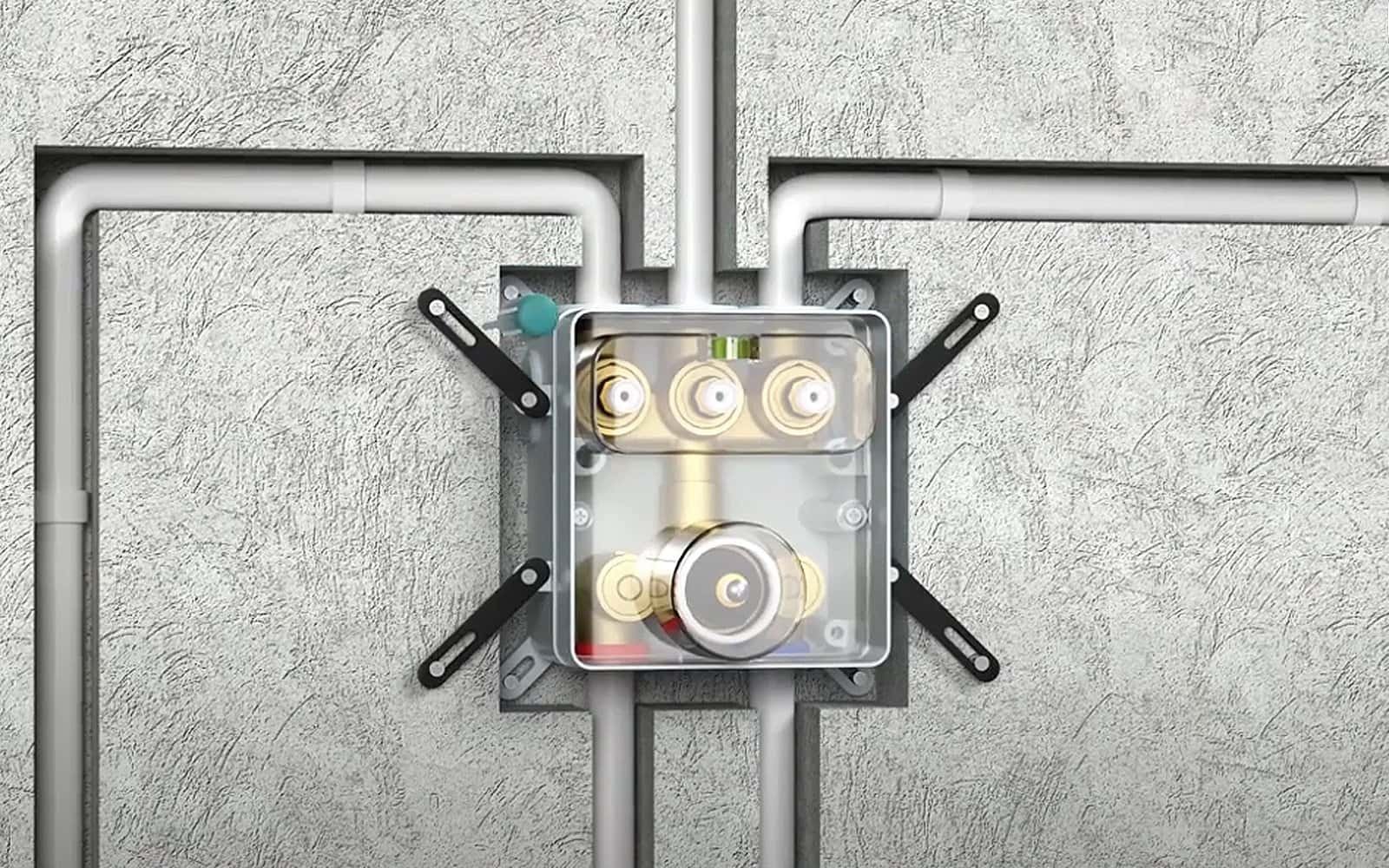
Conclusion
Choosing a shower system with a rough-in valve is a key decision for anyone looking to build a functional and stylish bathroom. As an integral part of the system, the rough-in valve contributes to an efficient shower experience. Whether you opt for a pressure balance or a thermostatic model, understanding its role helps in making an informed choice for your home.
FAQs
Related Posts







